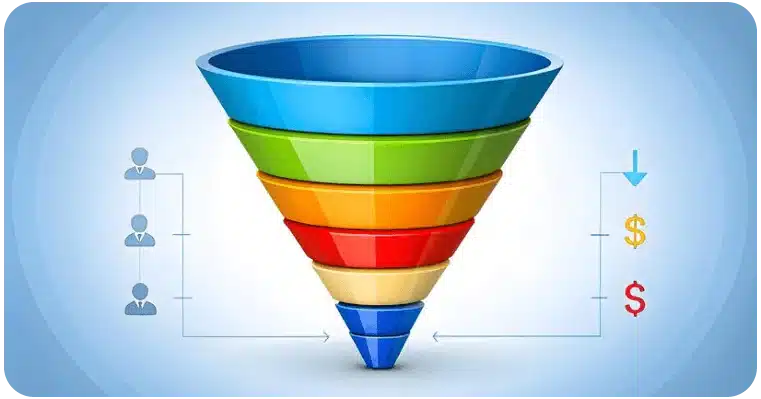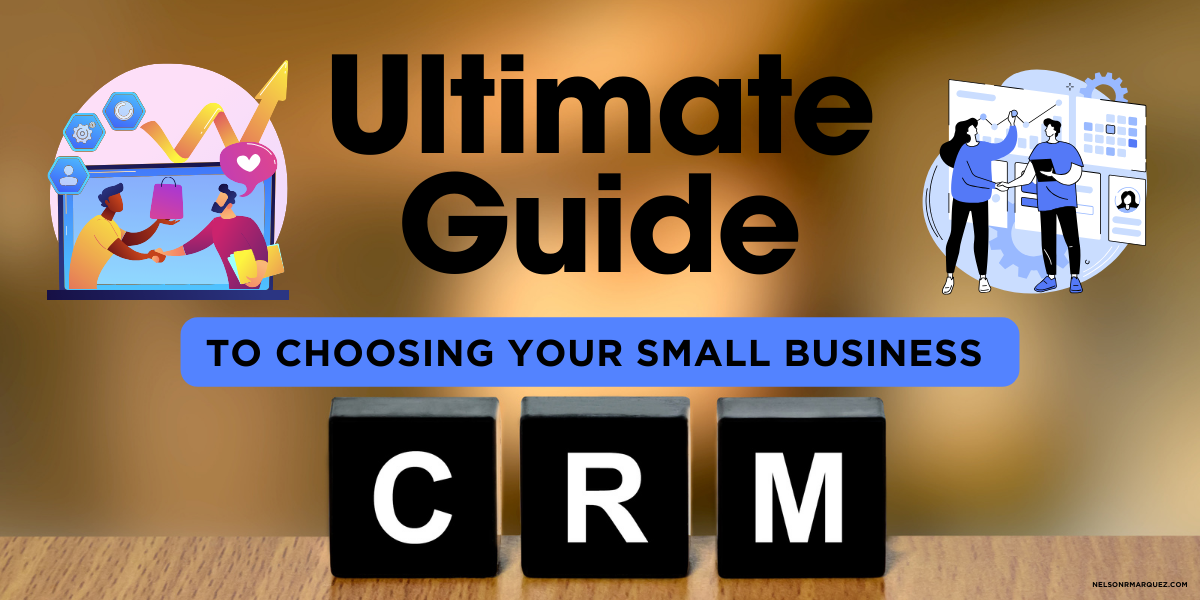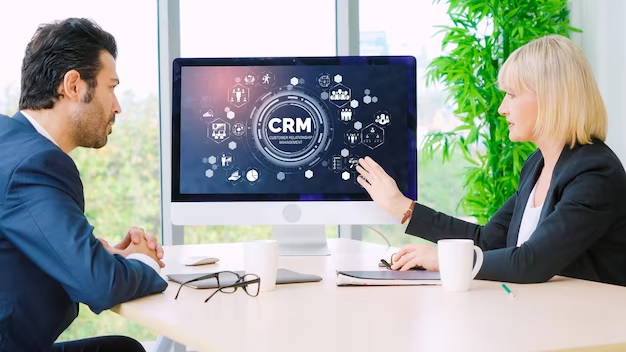
Mastering the CRM Marketing Funnel: A Step-by-Step Guide to Setup, Optimize, and Dominate
In today’s fast-paced digital landscape, businesses are constantly seeking ways to connect with their audience, nurture leads, and drive conversions. At the heart of this pursuit lies the CRM marketing funnel. But what exactly is it, and how can you effectively set one up to maximize your marketing efforts? This comprehensive guide will take you through every step of the process, from initial setup to ongoing optimization, ensuring you have the knowledge and tools to build a high-performing CRM marketing funnel. We’ll delve into the intricacies of customer relationship management (CRM), explore the various stages of the marketing funnel, and provide actionable strategies to transform leads into loyal customers.
Understanding the CRM Marketing Funnel
Before diving into the setup, it’s crucial to understand the fundamental concepts. The CRM marketing funnel is a strategic framework that maps the customer journey from initial awareness to becoming a loyal advocate. It leverages CRM software to manage and track interactions at each stage, allowing businesses to personalize their marketing efforts and improve conversion rates.
What is CRM?
CRM, or Customer Relationship Management, is a technology that helps businesses manage and analyze customer interactions and data throughout the customer lifecycle. It’s more than just a database; it’s a central hub for all customer-related information, including contact details, purchase history, communication logs, and more. A robust CRM system empowers businesses to:
- Centralize customer data
- Improve communication and personalization
- Automate marketing and sales processes
- Gain valuable insights into customer behavior
- Enhance customer satisfaction and loyalty
The Stages of the Marketing Funnel
The marketing funnel typically consists of several stages, each representing a different phase in the customer journey. While the specific names and number of stages may vary, the core principles remain consistent. Here’s a breakdown of the most common stages:
- Awareness: This is the top of the funnel (TOFU), where potential customers become aware of your brand and products/services. Marketing efforts at this stage focus on attracting attention and generating interest through content marketing, social media, and advertising.
- Interest: Once prospects are aware of your brand, they enter the interest stage. They start to show interest in your offerings and begin researching solutions to their problems. Content like blog posts, webinars, and case studies are effective at this stage.
- Decision: In the decision stage, prospects evaluate their options and decide whether to purchase your product or service. They may compare your offerings with competitors, read reviews, and request demos. This is where you’ll use targeted content and sales efforts to persuade them to choose you.
- Action: This is the bottom of the funnel (BOFU), where prospects convert into customers. This stage involves the actual purchase or conversion action.
- Loyalty: After a customer makes a purchase, the journey continues. The loyalty stage focuses on retaining customers, encouraging repeat purchases, and turning them into brand advocates. This involves providing excellent customer service, personalized offers, and loyalty programs.
Setting Up Your CRM Marketing Funnel: A Step-by-Step Guide
Now that you understand the fundamentals, let’s get into the practical steps of setting up your CRM marketing funnel. This process involves choosing the right CRM software, configuring your system, and implementing marketing automation strategies. Follow these steps to get started:
1. Choose the Right CRM Software
The first and arguably most important step is selecting the right CRM software. There are numerous options available, each with its own features, pricing, and target audience. Consider the following factors when making your decision:
- Your business needs: What are your specific requirements? Do you need features for sales automation, marketing automation, customer service, or all of the above?
- Budget: CRM software pricing varies widely. Determine your budget and look for options that fit your financial constraints.
- Scalability: Choose a CRM that can grow with your business. Consider whether it can handle increasing amounts of data and user accounts.
- Ease of use: The software should be user-friendly and easy to learn. Look for a platform with an intuitive interface and helpful resources.
- Integrations: Does the CRM integrate with your existing tools, such as your email marketing platform, website, and social media channels?
- Reviews and reputation: Research different CRM providers and read reviews from other users to get an idea of their strengths and weaknesses.
Some popular CRM options include:
- Salesforce
- HubSpot CRM
- Zoho CRM
- Microsoft Dynamics 365
- Pipedrive
2. Define Your Target Audience and Customer Personas
Before configuring your CRM, you need a clear understanding of your target audience. Create detailed customer personas that represent your ideal customers. This involves researching and documenting the following information:
- Demographics: Age, gender, location, income, education, etc.
- Psychographics: Values, interests, lifestyle, attitudes, and motivations.
- Behaviors: Online habits, purchase history, and brand preferences.
- Pain points: What challenges are they facing? What problems are they trying to solve?
- Goals: What are they trying to achieve?
By creating detailed customer personas, you can tailor your marketing messages, content, and offers to resonate with your target audience and increase your chances of conversion.
3. Configure Your CRM System
Once you’ve chosen your CRM software and defined your target audience, it’s time to configure the system. This involves setting up the following:
- User accounts and permissions: Create user accounts for your team members and assign appropriate permissions based on their roles.
- Data fields and custom objects: Customize the data fields to capture relevant customer information, such as contact details, lead source, purchase history, and communication logs. Create custom objects to track specific data relevant to your business.
- Lead scoring: Implement a lead scoring system to prioritize leads based on their behavior and engagement. Assign points to specific actions, such as website visits, email opens, and form submissions.
- Workflow automation: Set up automated workflows to streamline your sales and marketing processes. Automate tasks such as lead assignment, email follow-ups, and task creation.
- Integrations: Integrate your CRM with other tools, such as your email marketing platform, website, and social media channels.
4. Map Your Customer Journey
Understanding the customer journey is crucial for building an effective CRM marketing funnel. Map out the various touchpoints and interactions your customers have with your brand, from initial awareness to becoming a loyal customer. This process involves:
- Identifying the stages of the funnel: Define the stages that are most relevant to your business. (Awareness, interest, decision, action, loyalty)
- Mapping touchpoints: Identify all the ways your customers interact with your brand at each stage, such as website visits, social media engagement, email opens, and phone calls.
- Analyzing customer behavior: Analyze how customers move through the funnel, identifying any bottlenecks or drop-off points.
- Defining goals for each stage: Set specific, measurable, achievable, relevant, and time-bound (SMART) goals for each stage of the funnel.
5. Create Targeted Content and Offers
Once you’ve mapped the customer journey, you can create targeted content and offers for each stage of the funnel. This involves:
- Awareness stage: Create content that attracts attention and generates interest, such as blog posts, social media updates, and infographics. Offer free resources, such as ebooks or webinars, to capture leads.
- Interest stage: Provide informative content that educates prospects about your products/services and solutions to their problems. Examples include case studies, product demos, and comparison guides.
- Decision stage: Offer personalized content and incentives that persuade prospects to choose your brand. This might include special offers, free trials, or consultations.
- Action stage: Make it easy for prospects to convert by providing clear calls to action and a seamless purchase process.
- Loyalty stage: Provide excellent customer service, personalized offers, and loyalty programs to retain customers and encourage repeat purchases.
6. Implement Marketing Automation
Marketing automation is a powerful tool for streamlining your marketing efforts and improving efficiency. Use your CRM to automate tasks such as:
- Lead nurturing: Set up automated email sequences to nurture leads and move them through the funnel.
- Lead scoring: Automatically score leads based on their behavior and engagement.
- Workflow automation: Automate tasks such as lead assignment, follow-up reminders, and task creation.
- Personalized email marketing: Segment your audience and send targeted email campaigns based on their behavior and preferences.
7. Track and Analyze Your Results
Regularly track and analyze your results to measure the effectiveness of your CRM marketing funnel. Use your CRM’s reporting and analytics features to monitor key metrics, such as:
- Website traffic
- Lead generation
- Conversion rates
- Customer acquisition cost (CAC)
- Customer lifetime value (CLTV)
- Sales revenue
- Customer satisfaction
Identify areas for improvement and make adjustments to your strategy as needed. A/B test different content, offers, and email campaigns to optimize your results.
Optimizing Your CRM Marketing Funnel for Maximum Impact
Setting up your CRM marketing funnel is just the beginning. To achieve maximum impact, you need to continuously optimize your efforts. Here are some strategies for ongoing optimization:
1. Continuously Refine Your Customer Personas
Your target audience and customer personas are not static. Continuously gather data and feedback to refine your understanding of your ideal customers. This involves:
- Analyzing customer data: Review your CRM data, website analytics, and social media insights to identify trends and patterns.
- Conducting customer surveys: Ask your customers for feedback on their experiences and preferences.
- Analyzing customer feedback: Read customer reviews, social media comments, and support tickets to understand their pain points and needs.
- Updating your personas: Regularly update your customer personas based on your findings.
2. Personalize Your Marketing Messages
Personalization is key to engaging your audience and driving conversions. Use your CRM data to personalize your marketing messages, content, and offers. This involves:
- Segmenting your audience: Divide your audience into segments based on their demographics, behaviors, and preferences.
- Creating targeted content: Develop content that is relevant to each segment.
- Personalizing email campaigns: Use personalized subject lines, greetings, and content in your email campaigns.
- Personalizing website experiences: Use your CRM data to personalize the content and offers displayed on your website.
3. Improve Your Lead Scoring System
Your lead scoring system should be constantly refined to accurately identify and prioritize the most qualified leads. Regularly review your lead scoring criteria and make adjustments based on your results. Consider the following:
- Reviewing lead scoring criteria: Ensure your criteria are relevant and accurate.
- Adding new criteria: Consider adding new criteria based on your findings.
- Adjusting point values: Adjust the point values assigned to each criterion.
- Analyzing lead conversion rates: Analyze the conversion rates of leads with different scores.
4. A/B Test Your Content and Offers
A/B testing is a powerful tool for optimizing your content and offers. Experiment with different variations of your content and offers to see what resonates best with your audience. Test the following:
- Headlines
- Subject lines
- Calls to action
- Images
- Content formats
- Landing pages
- Offers
5. Regularly Review and Update Your Workflows
Your workflows should be reviewed and updated regularly to ensure they are efficient and effective. Identify any bottlenecks or inefficiencies and make adjustments as needed. Consider the following:
- Reviewing existing workflows: Identify any areas for improvement.
- Adding new workflows: Create new workflows to automate additional tasks.
- Optimizing existing workflows: Optimize existing workflows for maximum efficiency.
- Testing workflows: Test your workflows to ensure they are working correctly.
6. Foster Collaboration Between Sales and Marketing
Collaboration between your sales and marketing teams is crucial for the success of your CRM marketing funnel. Ensure that both teams are aligned on goals, strategies, and processes. Consider the following:
- Regular meetings: Hold regular meetings to discuss progress, challenges, and opportunities.
- Shared goals: Align your sales and marketing goals.
- Data sharing: Share data and insights between teams.
- Feedback loops: Establish feedback loops to improve communication and collaboration.
7. Provide Excellent Customer Service
Excellent customer service is essential for building customer loyalty and encouraging repeat purchases. Provide prompt, helpful, and personalized support to your customers. Consider the following:
- Responding quickly: Respond to customer inquiries promptly.
- Providing helpful solutions: Provide helpful and effective solutions to customer problems.
- Personalizing customer interactions: Personalize your interactions with customers.
- Gathering feedback: Gather feedback from customers to improve your service.
Common Mistakes to Avoid
Setting up and managing a CRM marketing funnel can be challenging. Avoid these common mistakes to maximize your chances of success:
- Not choosing the right CRM software: Make sure you choose a CRM that meets your specific business needs.
- Failing to define your target audience: Understand your target audience and create detailed customer personas.
- Not configuring your CRM system properly: Take the time to properly configure your CRM system.
- Not mapping your customer journey: Map out the customer journey to understand how customers interact with your brand.
- Creating generic content and offers: Personalize your content and offers for each stage of the funnel.
- Not implementing marketing automation: Automate tasks to improve efficiency and save time.
- Not tracking and analyzing your results: Regularly track and analyze your results to measure the effectiveness of your funnel.
- Not continuously optimizing your efforts: Continuously refine and optimize your CRM marketing funnel for maximum impact.
- Lack of integration: Failing to integrate CRM with other crucial marketing tools like email platforms and social media.
- Ignoring data privacy: Not adhering to data privacy regulations (like GDPR or CCPA).
Conclusion: Building a Winning CRM Marketing Funnel
The CRM marketing funnel is a powerful tool for driving conversions, building customer loyalty, and achieving sustainable business growth. By understanding the fundamentals, following the step-by-step guide, and continuously optimizing your efforts, you can create a high-performing funnel that transforms leads into loyal customers. Remember that building a successful CRM marketing funnel is an ongoing process that requires dedication, analysis, and a commitment to providing value to your customers. Embrace the journey, and watch your business thrive!
By implementing these strategies and avoiding the common pitfalls, you’ll be well on your way to building a winning CRM marketing funnel that drives results for your business.




